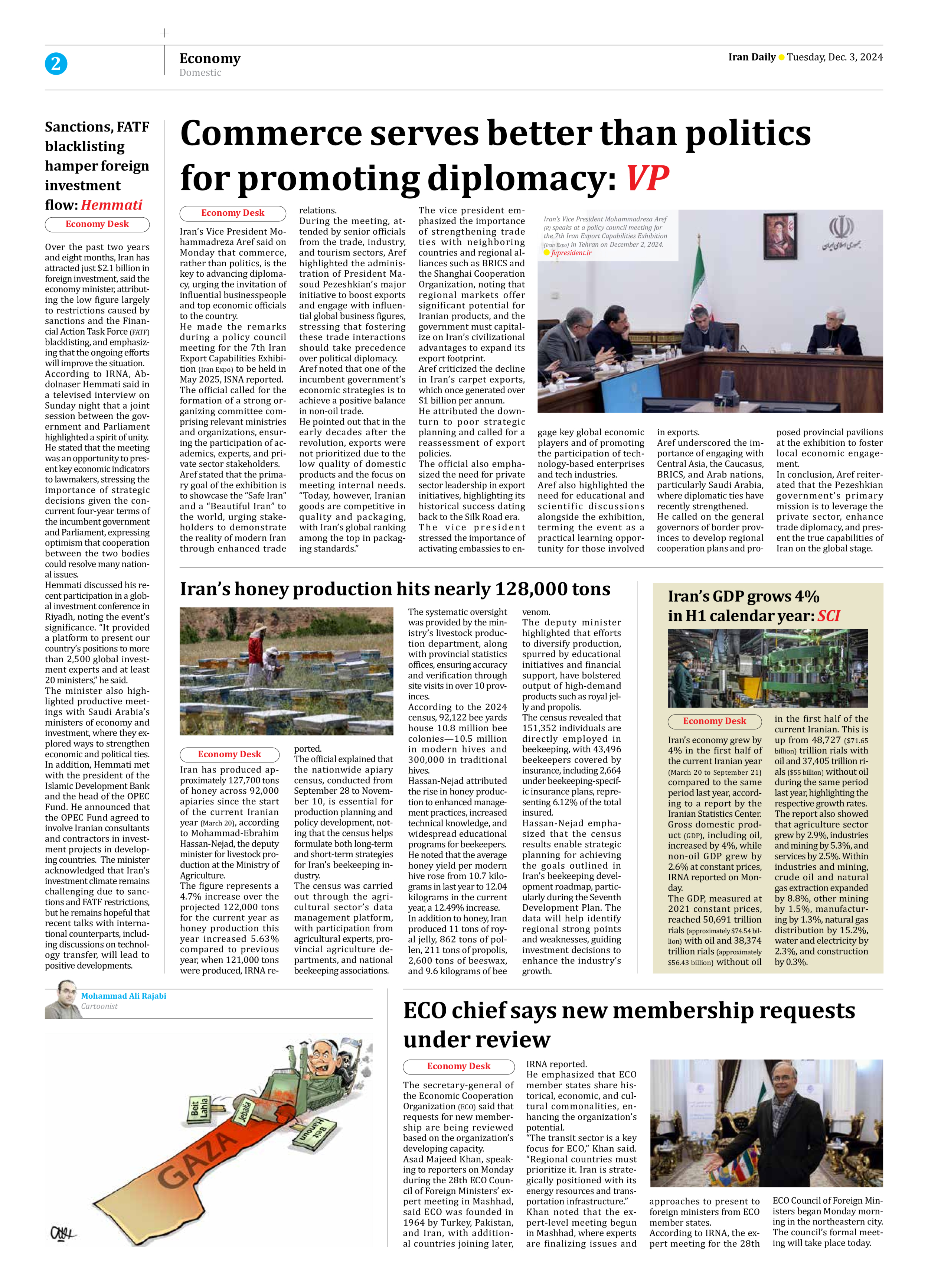
Iran’s honey production hits nearly 128,000 tons
Iran has produced approximately 127,700 tons of honey across 92,000 apiaries since the start of the current Iranian year (March 20), according to Mohammad-Ebrahim Hassan-Nejad, the deputy minister for livestock production at the Ministry of Agriculture.
The figure represents a 4.7% increase over the projected 122,000 tons for the current year as honey production this year increased 5.63% compared to previous year, when 121,000 tons were produced, IRNA reported.
The official explained that the nationwide apiary census, conducted from September 28 to November 10, is essential for production planning and policy development, noting that the census helps formulate both long-term and short-term strategies for Iran’s beekeeping industry.
The census was carried out through the agricultural sector’s data management platform, with participation from agricultural experts, provincial agriculture departments, and national beekeeping associations.
The systematic oversight was provided by the ministry’s livestock production department, along with provincial statistics offices, ensuring accuracy and verification through site visits in over 10 provinces.
According to the 2024 census, 92,122 bee yards house 10.8 million bee colonies—10.5 million in modern hives and 300,000 in traditional hives.
Hassan-Nejad attributed the rise in honey production to enhanced management practices, increased technical knowledge, and widespread educational programs for beekeepers.
He noted that the average honey yield per modern hive rose from 10.7 kilograms in last year to 12.04 kilograms in the current year, a 12.49% increase.
In addition to honey, Iran produced 11 tons of royal jelly, 862 tons of pollen, 211 tons of propolis, 2,600 tons of beeswax, and 9.6 kilograms of bee venom.
The deputy minister highlighted that efforts to diversify production, spurred by educational initiatives and financial support, have bolstered output of high-demand products such as royal jelly and propolis.
The census revealed that 151,352 individuals are directly employed in beekeeping, with 43,496 beekeepers covered by insurance, including 2,664 under beekeeping-specific insurance plans, representing 6.12% of the total insured.
Hassan-Nejad emphasized that the census results enable strategic planning for achieving the goals outlined in Iran’s beekeeping development roadmap, particularly during the Seventh Development Plan. The data will help identify regional strong points and weaknesses, guiding investment decisions to enhance the industry’s growth.







